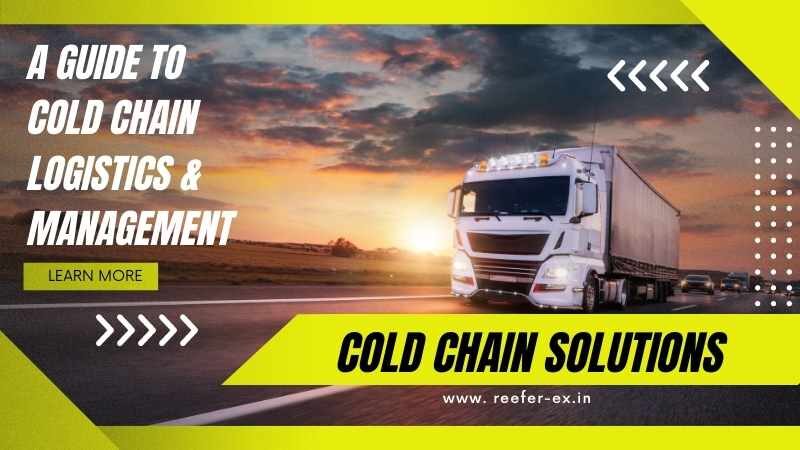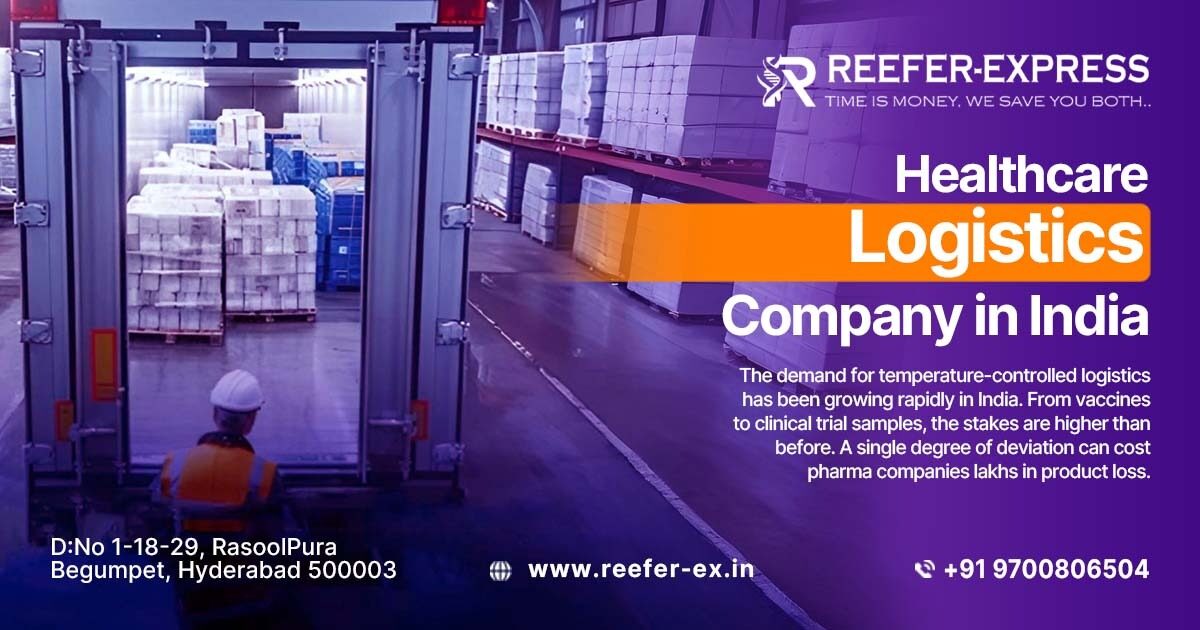What Is a Cold Chain?
Cold chains are networks of refrigerated transportation and storage facilities that maintain a consistently cold temperature throughout the supply chain. The cold chain is essential to ensuring the quality and safety of perishable goods such as food, pharmaceuticals, and chemicals.
cold chain logistics refers to the planning and coordination of these activities to ensure that products are kept at the appropriate temperature at every stage of the supply chain.
Types of Cold Chain
Cold Chain Equipment
There are many different types of cold chain equipment, each designed for a specific purpose. Some common examples include:-
Refrigerated trailers and containers: These are specially insulated trailers or containers that maintain a constant temperature, typically between 2°C and 8°C. They are used to transport perishable goods such as food and pharmaceuticals.
Refrigerated warehouses: These are storage facilities that maintain a controlled temperature, typically between 1°C and 4°C. They are used to store perishable goods such as food and pharmaceuticals.
Blast freezers: These are very cold storage units, usually -40°C or colder. They are used to store goods such as ice cream and frozen foods.
Ice cream trucks: These are trucks that have been specially designed to keep ice cream frozen during transport. They typically have a large freezer compartment and may also have a refrigerated compartment for other perishable goods.
Airfreight containers: These are containers that are used to transport goods by air. They are insulated and have temperature controls to keep the goods at a constant temperature, usually between 2°C and 8°C.
Cold rooms: These are rooms that are maintained at a constant cold temperature, typically between 1°C and 4°C. They are used to store perishable goods such as food and pharmaceuticals.
Cold Chain System
There are two main types of cold chain systems, active and passive.
- Active systems use mechanical means to maintain the desired temperature, such as refrigeration or freezing.
- Passive systems rely on insulation and thermal mass to maintain the desired temperature. Common examples of passive systems include cool boxes, wine cellars, and beer fridges.
Common Temperature Ranges for Cold Chains
The FDA recommends the following temperature ranges for different types of products:
- Frozen food: -10°F to 0°F (-23.3°C to -17.8°C)
- Refrigerated food: 33°F to 39°F (0.6
The main difference between the two types of systems is that active cold chain systems require a continuous source of energy to maintain the desired temperatures, while passive cold chain systems do not.
What Is Cold Chain Logistics?
Cold chain logistics is the process of organizing the storage and transportation of temperature-sensitive goods. The main challenge in cold chain logistics is maintaining the product’s temperature within the required range throughout the supply chain.
What Are the Benefits of Cold Chain Logistics?
There are several benefits of using cold chain logistics, including:
1. Extended shelf life: By maintaining a product’s temperature within the required range, it can often be stored for longer periods of time, which can help to reduce waste.
2. Improved quality: Temperature-sensitive products are often of a higher quality when they are kept within the required temperature range throughout the supply chain.
3. Reduced costs: In many cases, using cold chain logistics can be more cost-effective than traditional methods of transportation and storage.
Cold Chain Technologies
There are various technologies that can be used in cold chain logistics, including:
1. Refrigeration: This is the most common method of temperature control in the supply chain. It involves using mechanical means to cool products, such as refrigerated trucks and storage warehouses.
2. Thermal packaging: This includes insulation materials and packaging designed to maintain the product’s temperature during transportation.
3. Temperature-controlled Logistics: This can be either refrigerated trucks, trailers, and containers, or “dry ice” shipments that use frozen carbon dioxide to keep products cold.
4. Monitoring and tracking: This involves using technology to track and monitor the product’s temperature throughout the supply chain.
Common Cold Chain Management Challenges
There are various challenges that can be associated with cold chain management, including:
1. Maintaining the required temperatures: This can be a challenge due to fluctuating ambient temperatures and the need for constant energy sources in active cold chain systems.
2. Ensuring product quality: It is important to maintain the product’s quality throughout the supply chain in order to avoid customer dissatisfaction.
3. Reducing costs: There is a need to strike a balance between ensuring the product’s quality and maintaining cost-effectiveness.
4. Managing the supply chain: There is a need to coordinate the various parties involved in the cold chain, such as suppliers, manufacturers, retailers, and transportation companies.
5. Meeting regulatory requirements: There are often strict regulations that must be followed in order to ensure the safety of temperature-sensitive products.
Cold Chain Standards & Certification
Federal regulators have established standards for the transportation and storage of temperature-sensitive products. These standards are known as the “Sanitary Food Transportation Act” (SFTA) and the “Refrigerated Food Transportation Act” (RFTA).
In order to ensure compliance with these regulations, many companies choose to certify their cold chain management systems. The most common certification is the International Organization for Standardization’s (ISO) 22000 food safety management standard.
How Can You Introduce Live Cold Chain Monitoring Into Your Business?
If you’re looking to introduce live cold chain monitoring into your business, there are various things you need to consider, such as:
1. What type of products you will be monitoring: You need to choose a solution that is compatible with the type of products you want to monitor.
2. The size of your operation: You need to choose a solution that is scalable and can grow with your business.
3. Your budget: You need to find a solution that fits within your budget.
4. The features you need: You need to identify the features that are most important to you and your business.
5. Your suppliers: You need to find a solution that is compatible with your suppliers’ systems.
What Are the Current Trends in Cold Chain Logistics?
There are various trends that are currently shaping the cold chain logistics industry, including:
1. The rise of e-commerce: The growth of e-commerce is resulting in an increase in the number of small and medium-sized businesses that need to transport temperature-sensitive products.
2. The expansion of the middle class: The expansion of the middle class in developing countries is resulting in an increase in demand for temperature-sensitive products, such as pharmaceuticals and food.
3. The growth of the healthcare industry: The healthcare industry is expected to grow significantly in the coming years, which will result in an increase in the need for cold chain logistics solutions.
Reefer Express Can Handle All Your Cold Chain Needs
If you’re looking for a company that can provide you with all your cold chain needs, looks no further than Reefer Express. We are a leading provider of cold chain solutions and our team of experts can help you choose the right solution for your business. Contact us today to learn more about our services.







Comments2
Everything is very open with a really clear description of the challenges. It was definitely informative. Your site is very helpful. Many thanks for sharing!
You are welcome! The reader's feedback provides me with more motivation and courage to write confidently.